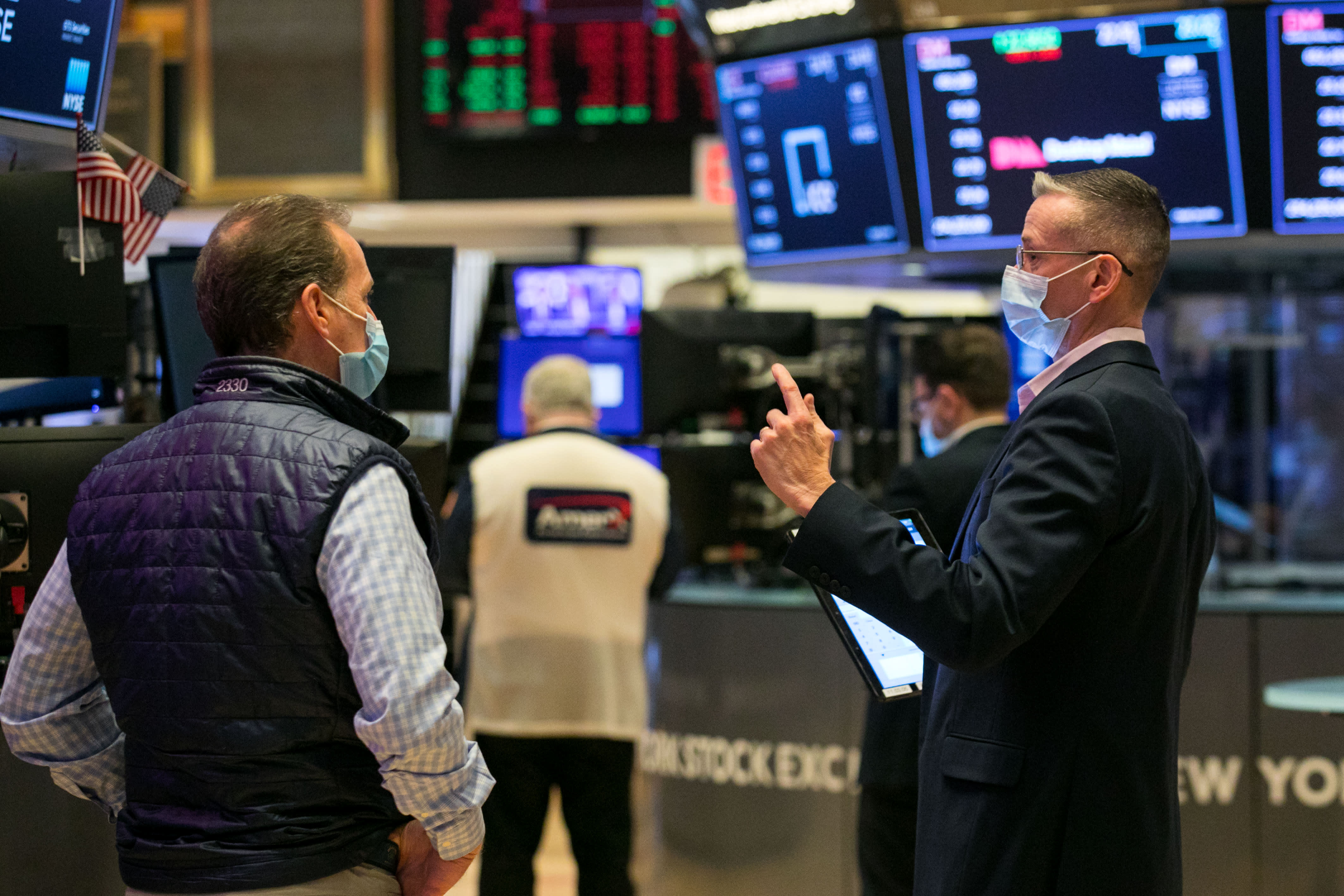Traders on floor of the New York Stock Exchange.
Source: New York Stock Exchange
With the Biden inauguration — and the risk of disruption — now over, what’s next for markets?
The S&P 500 has risen 15% since the Nov. 3 election to historic highs on a series of macroeconomic hopes that have driven sentiment, technical levels, and earnings expectations to very elevated levels.
The good news: So far, those hopes are coming to fruition.
The bad news: The stock market has run up big and there is very little room for error.
The macro: Plenty of ‘hopium’
The bedrock of the market rally to historic highs is the trifecta of additional stimulus to get through the Covid winter, a smooth and effective vaccine rollout, and a significant second half reopening of the U.S. economy (the so-called “reflation trade”).
With markets at these dizzying heights, everything must go right, but pitfalls are everywhere. President Joe Biden may fail to get a stimulus program large enough to please the markets. The vaccine rollout may falter. New strains may emerge resistant to the vaccine. The recovery may prove to take much longer than anticipated, with unanticipated pockets of weakness.
“Right now, the whole reflation, stimulus, and vaccine story remains intact,” said Alec Young, chief investment officer at Tactical Alpha. ”But any change in that narrative will cause stocks to falter.”
Markets at extremes
It’s not just stock prices that are at extreme levels.
Ed Clissold of Ned Davis Research noted that traders were exhibiting “extreme optimism” and wondered, “Are there any bears left?”
Technical levels are also at extremes. The 200-day moving average for the S&P 500 is a standard metric to measure momentum. The S&P 500 is now 16% above the 200-day moving average, twice the normal levels even in bullish markets. Other technical levels also are flashing overbought.
Earnings at the crossroads
The S&P is trading in nosebleed territory: nearly 23 times 2021 earnings, well above the historic norm of roughly 15-17 times forward earnings. Bulls are insisting that a higher market multiple is appropriate when the economy is expanding as dramatically as is expected in the latter half of 2021, and that analysts are likely underestimating corporate earnings, as they did in the third quarter.
Others aren’t so sure. Among them are the short seller Jim Chanos who quipped on CNBC that some stocks were getting far, far ahead of themselves: ”The stock market is clearly looking ahead — at this point, I think it’s looking ahead to 2022, 2030, or 2050, depending on the stock.”
The good news: Bulls have been right, so far. Early earnings reports have far exceeded expectations. The 43 companies reporting Q4 earnings beat expectations by 18%, similar to the 19% beat in the third quarter, according to Earnings Scout.
The bad news: Netflix aside, most companies that have reported are not rallying on strong earnings reports, a sign that while earnings are excellent, stocks have run up big and there is little room for error.
Everyone in the pool
Perhaps the biggest concern is that valuations are getting stretched everywhere — there is nothing cheap, Chanos noted.
“A lot of the reopening plays that people have been buying hand over fist since June, when the first glimmers of the vaccine being available in the fall came out, they’re back to way above where they were in 2019 in terms of total market cap … whether it’s in travel or leisure or what have you. And then, on top of that, the stay-at-home stocks are still doing relatively well, too, so the market is having both its cake and eating it, too,” he said.
That, Young insisted, is why the market is at risk: ”The pain trade — the trade that would cause the greatest distress to the greatest number of investors — is down.”
Subscribe to CNBC PRO for exclusive insights and analysis, and live business day programming from around the world.
